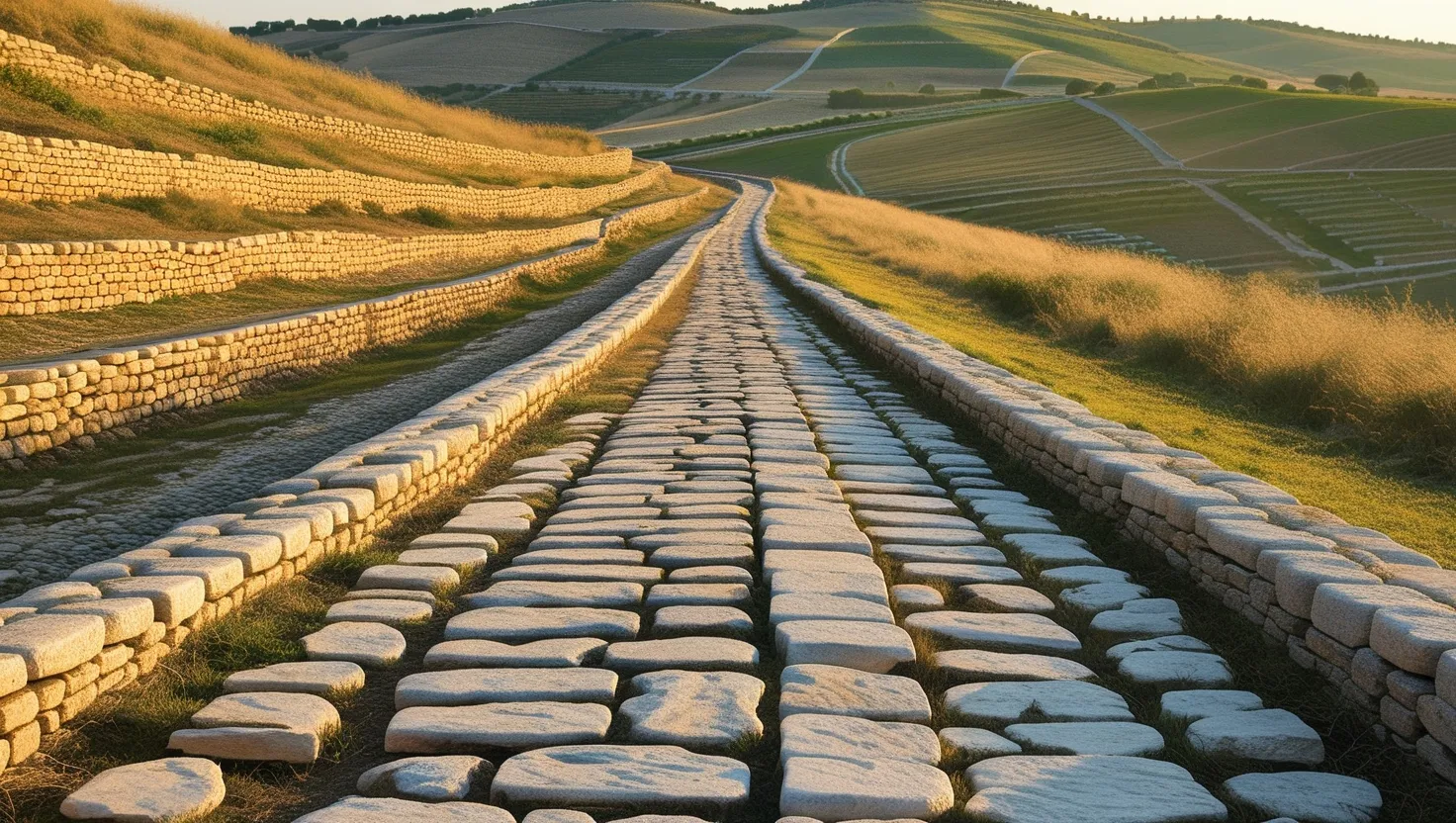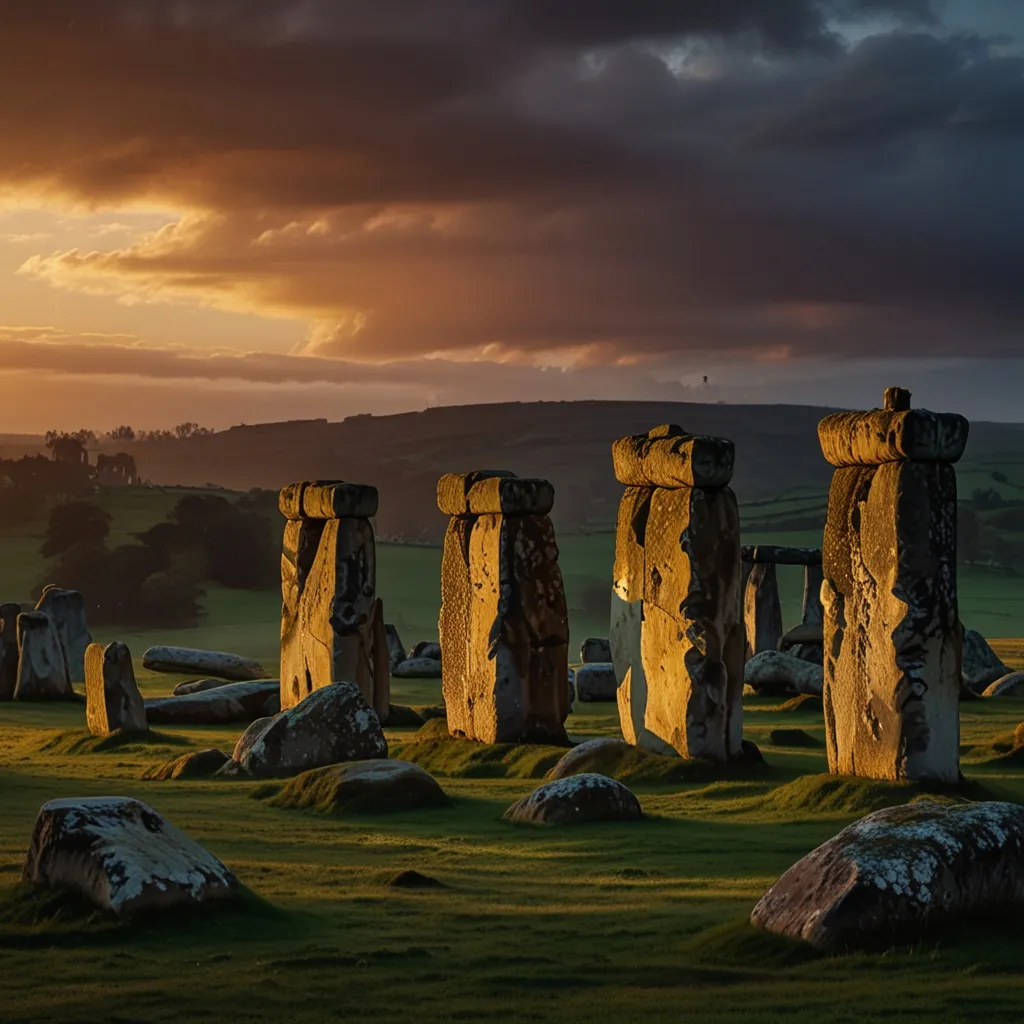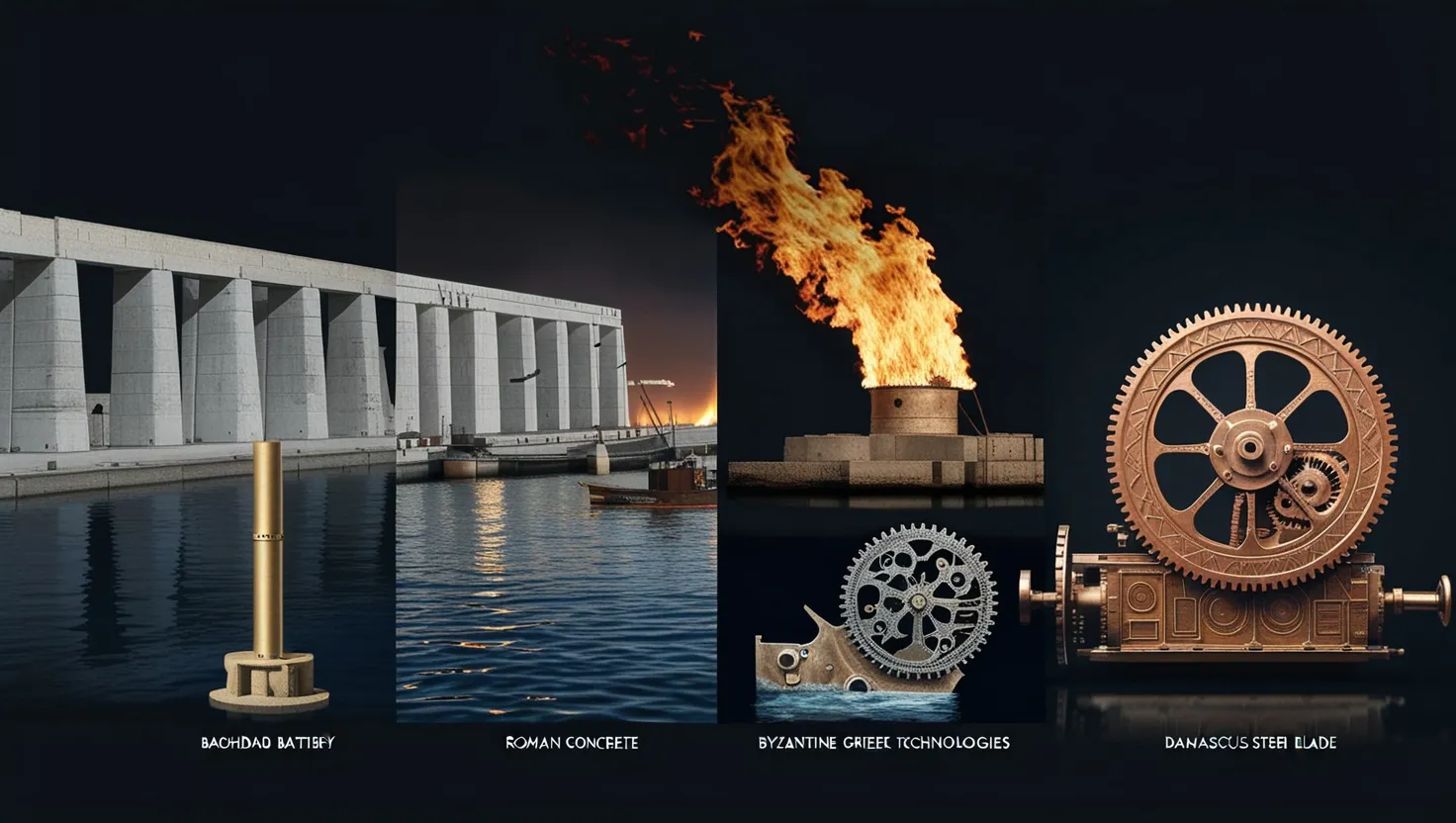I often think about how the largest changes in history didn’t always come from dramatic wars or the rise and fall of kings. Sometimes, the world changed because someone decided to build a road, dig a tunnel, or weave a bridge out of grass. The infrastructure of ancient civilizations, long before steel and skyscrapers, shaped entire societies and still shapes us today.
Let’s consider the scale and ambition of what our ancestors accomplished. When I imagine the Roman Empire, the first thing that comes to mind isn’t just togas or Colosseums. It’s the roads—stretching like veins across continents. They covered over 250,000 miles, not just as paths from one city to another but as connections binding the fragments of an empire together. These weren’t just dirt tracks: each road was layered with stones, tightly fitted, with ditches for drainage and milestones marking distance. Roads like the famed Via Appia allowed armies to move quickly and trade to flourish, but they also carried ideas, stories, and even diseases. Isn’t it striking how trade and travel shaped the Roman sense of unity and identity, much as the internet shapes ours? I often wonder: would Rome have lasted as long as it did without this web of stone underfoot?
“All roads lead to Rome.” This phrase captures not just a geographical truth but a social and political strategy. Roads weren’t only about speed; they were about control. Imagine being a merchant, a soldier, or a messenger, relying on a highway system that felt almost modern in its efficiency. Even today, road layouts and drainage systems draw upon the lessons learned by Roman engineers. The next time you take a highway exit, think about those surveyors, measuring in straight lines under a Mediterranean sun.
Now, let’s shift eastward to China and stand on the banks of its Grand Canal. By the 7th century, this ribbon of water stretched more than 1,100 miles, connecting the country’s two great rivers. Picture thousands of workers digging, building locks, and dredging channels—all without modern machinery. The Grand Canal wasn’t just a feat of engineering; it was the lifeblood of China’s economy and stability. Through it, grain from the fertile south fed the hungry, populous north. Prices stabilized, markets integrated, and governments could feed their capitals and armies. In many ways, the canal was a silent force, holding the country together when droughts or floods might have torn it apart.
Have you ever wondered how much work it took to keep a civilization’s heart beating? The Grand Canal answered that question every day, for centuries, becoming a template for later infrastructure that fed and united whole nations. And unlike many great works that fell into ruin, the canal still serves millions today—a rare continuity that even modern megaprojects can envy.
Water, in fact, is often the boundary between a thriving society and one that withers. In the arid lands of ancient Persia, the solution was as clever as it was humble: the qanat. Imagine a hand-dug tunnel, stretching underground for miles, fed by mountain aquifers and guided only by gravity. These channels allowed settlements to bloom in places where the land above was dry and unforgiving. The qanats protected precious water from evaporation and contamination. I’m fascinated by how these systems expanded across empires, even influencing regions as far away as Spain. Sometimes the simplest solutions—digging horizontally instead of vertically—can make life possible where it was thought to be impossible.
“Thousands have lived without love, not one without water.” — W. H. Auden
What’s striking is not just the technical ingenuity of qanats, but their social dimension. Communities had to cooperate, maintain, and share these water sources, turning engineering into a practice of diplomacy and trust. Even today, in parts of Iran and North Africa, these ancient tunnels still provide water, a testament to design that lasts when natural resources are scarce.
Traveling up into the Andes, you’ll find another kind of ingenuity—one that’s as breathtaking in its vulnerability as in its strength: the Inca rope bridges. These aren’t the stone arches and pillars of Rome, but bridges made from woven grass, spanning canyons where stone or timber would be impossible. The Q’eswachaka bridge, for example, has been rebuilt annually for centuries, with entire villages coming together for the task. Imagine stepping onto a bridge that sways with the wind, feeling, beneath your feet, the product of communal effort and trust.
Why choose grass over stone? For the Incas, local materials and collective labor turned logistical obstacles into opportunities for social bonding. The bridges weren’t just transport links; they were symbols of cooperation. Llama caravans, messengers, and even armies could cross ravines otherwise impassable. It’s a lesson in resourcefulness and in thinking differently about what strength means—sometimes, resilience comes from flexibility and renewal, not permanence.
“It is not the strongest of the species that survive, nor the most intelligent, but the one most responsive to change.” — Charles Darwin
In the heart of ancient Rome, a different problem loomed—how to manage waste and stormwater in a growing city surrounded by marshes. Enter the Cloaca Maxima, an engineering marvel evolving over centuries from an open ditch to a complex sewer system. It did more than just drain the muddy Roman Forum; it made dense urban living possible by carrying away waste, reducing disease, and clearing space for temples and markets.
Think about how rare it was, in the ancient world, for cities to grow without being crippled by poor sanitation. The Cloaca Maxima wasn’t glamorous, but its effects were profound. By making city living healthier and more sustainable, it set the groundwork for public health principles and city planning that future generations would use. Rome showed that infrastructure isn’t just about what’s visible above ground; what’s underground can be just as crucial.
“Civilization advances by extending the number of important operations which we can perform without thinking about them.” — Alfred North Whitehead
All these projects—roads, canals, qanats, rope bridges, sewers—share something unexpected: each one didn’t just serve its immediate function but created new possibilities. Infrastructure isn’t just bricks and mortar (or grass and water); it’s a framework for how people live, work, and dream. When we look at the past, I think it’s important to ask: What made these systems so durable? Was it their materials? Their scale? Or was it the ability of communities to adapt and maintain them over generations?
Another intriguing perspective is how these old systems echo into the present. Many cities still follow the footprints of Roman roads. Modern logistics and highway planning draw on principles first practiced by Roman engineers. The Grand Canal, though modernized, still ferries goods and people. Qanats continue to hydrate fields in places where surface water fails. Rope bridges inspire architects looking for sustainable, local solutions. And every modern sewer owes a quiet debt to the Cloaca Maxima, which proved that clean cities are possible.
Here’s a question I often ask myself: What current projects will shape our world for centuries to come? High-speed railways, desalination plants, spaceports—will they endure, adapt, and continue to serve, or will they vanish like so many ancient wonders?
“Infrastructure is much more than steel, glass, and concrete. It’s about connectivity, opportunity, and legacy.”
What binds these ancient feats together is not just their technical complexity, but their vision. Each one solved a local problem—moving armies, feeding cities, bringing water, crossing mountains, cleaning waste—but also set the stage for cultural and political change. Through infrastructure, rivalries became alliances, markets grew, borders blurred, and societies matured.
If there’s one lesson I take from these stories, it’s that the most powerful changes often start quietly—with the digging of a ditch, the laying of a stone, the weaving of a rope. When we build to last, we build not just for ourselves, but for generations to come.
So the next time you cross a bridge, drive a highway, turn on a tap, or walk in a city, pause and wonder: What forgotten hands and minds made this possible? And what responsibilities do we have, now, to dream and build as boldly as they once did?
Keywords: ancient infrastructure, Roman roads, Grand Canal China, ancient engineering, historical infrastructure, ancient civilizations, Roman engineering, infrastructure history, ancient water systems, qanat irrigation, Inca rope bridges, Cloaca Maxima, ancient Roman sewers, historical engineering feats, ancient transportation systems, Roman road construction, Chinese canal systems, Persian qanat technology, ancient urban planning, infrastructure development history, Roman Empire infrastructure, ancient aqueducts, historical construction techniques, ancient irrigation systems, Roman architecture, ancient city planning, historical water management, infrastructure legacy, ancient building techniques, Roman civil engineering, ancient trade routes, historical bridges, ancient construction methods, infrastructure evolution, Roman public works, ancient hydraulic engineering, historical transportation networks, ancient society infrastructure, Roman road network, ancient canal construction, historical engineering innovations, ancient water distribution, Roman infrastructure legacy, ancient engineering solutions, historical urban development, infrastructure archaeology, ancient construction projects, Roman engineering techniques, historical water systems, ancient structural engineering, infrastructure cultural impact, Roman civilization infrastructure, ancient public works, historical engineering achievements, infrastructure social impact, ancient technology transfer, Roman road system impact, ancient infrastructure maintenance, historical engineering legacy, infrastructure and civilization, ancient engineering marvels, Roman infrastructure planning, ancient water conservation, historical construction innovations, infrastructure historical significance, ancient engineering wisdom, Roman urban infrastructure, ancient irrigation technology, historical infrastructure lessons, ancient construction heritage, infrastructure historical analysis, Roman engineering principles, ancient water management systems, historical infrastructure development, ancient engineering legacy, Roman infrastructure influence, ancient construction expertise, historical engineering studies, infrastructure ancient civilizations, Roman engineering innovations, ancient hydraulic systems, historical construction science, ancient infrastructure impact, Roman public infrastructure, ancient engineering methods, historical water engineering, infrastructure historical perspective, ancient construction mastery, Roman infrastructure systems, ancient engineering practices, historical infrastructure research, ancient construction technology, infrastructure civilization development, Roman engineering heritage, ancient water infrastructure, historical construction legacy, ancient infrastructure planning, Roman engineering mastery, ancient hydraulic engineering, historical infrastructure innovation, ancient construction wisdom, infrastructure historical importance, Roman infrastructure development, ancient engineering significance, historical construction methods, ancient infrastructure systems, Roman engineering excellence, ancient water technology, historical infrastructure evolution, ancient construction principles, infrastructure historical context, Roman infrastructure legacy impact, ancient engineering contributions, historical construction achievements, ancient infrastructure influence, Roman engineering solutions, ancient water systems history, historical infrastructure significance, ancient construction innovations, infrastructure ancient history, Roman infrastructure achievements, ancient engineering expertise, historical construction excellence, ancient infrastructure development, Roman engineering legacy systems, ancient water management history, historical infrastructure impact, ancient construction heritage legacy, infrastructure civilization history, Roman engineering historical impact, ancient hydraulic systems history, historical construction significance, ancient infrastructure innovation legacy, Roman engineering contributions history, ancient water infrastructure systems, historical infrastructure achievements legacy, ancient construction technology history, infrastructure ancient civilizations impact, Roman engineering excellence history, ancient water systems innovation, historical infrastructure development legacy, ancient construction mastery history, infrastructure historical significance analysis, Roman infrastructure systems legacy, ancient engineering methods history, historical water engineering systems, infrastructure ancient civilizations development, Roman engineering innovations history, ancient hydraulic engineering systems, historical construction science legacy, ancient infrastructure impact civilization, Roman public infrastructure history, ancient engineering practices legacy, historical water infrastructure systems, infrastructure civilization development history, Roman engineering heritage legacy, ancient water infrastructure innovation, historical infrastructure research analysis, ancient construction technology innovation, infrastructure historical perspective analysis, Roman infrastructure development history, ancient engineering significance legacy, historical construction methods innovation, ancient infrastructure systems development, Roman engineering excellence legacy, ancient water technology innovation, historical infrastructure evolution analysis, ancient construction principles legacy, infrastructure historical context analysis, Roman infrastructure achievements history, ancient engineering contributions legacy, historical construction achievements innovation, ancient infrastructure influence analysis, Roman engineering solutions history, ancient water systems historical development, historical infrastructure significance analysis, ancient construction innovations legacy, infrastructure ancient history analysis, Roman infrastructure legacy historical impact, ancient engineering expertise development, historical construction excellence legacy, ancient infrastructure development analysis, Roman engineering systems historical significance, ancient water management historical systems, historical infrastructure impact analysis, ancient construction heritage historical legacy, infrastructure civilization historical development, Roman engineering historical impact analysis, ancient hydraulic systems historical significance, historical construction significance legacy, ancient infrastructure innovation historical analysis, Roman engineering contributions historical legacy, ancient water infrastructure historical systems, historical infrastructure achievements historical legacy, ancient construction technology historical innovation, infrastructure ancient civilizations historical impact, Roman engineering excellence historical legacy, ancient water systems historical innovation, historical infrastructure development historical legacy, ancient construction mastery historical significance, infrastructure historical significance historical analysis, Roman infrastructure systems historical legacy, ancient engineering methods historical development, historical water engineering historical systems, infrastructure ancient civilizations historical development, Roman engineering innovations historical significance, ancient hydraulic engineering historical systems, historical construction science historical legacy, ancient infrastructure impact historical civilization, Roman public infrastructure historical development, ancient engineering practices historical legacy, historical water infrastructure historical systems, infrastructure civilization development historical analysis, Roman engineering heritage historical legacy, ancient water infrastructure historical innovation, historical infrastructure research historical analysis, ancient construction technology historical innovation, infrastructure historical perspective historical analysis, Roman infrastructure development historical significance, ancient engineering significance historical legacy, historical construction methods historical innovation, ancient infrastructure systems historical development, Roman engineering excellence historical legacy, ancient water technology historical innovation, historical infrastructure evolution historical analysis, ancient construction principles historical legacy, infrastructure historical context historical analysis, Roman infrastructure achievements historical development, ancient engineering contributions historical legacy, historical construction achievements historical innovation, ancient infrastructure influence historical analysis, Roman engineering solutions historical development, ancient water systems historical development, historical infrastructure significance historical analysis, ancient construction innovations historical legacy, infrastructure ancient history historical analysis, Roman infrastructure legacy historical impact analysis, ancient engineering expertise historical development, historical construction excellence historical legacy, ancient infrastructure development historical analysis, Roman engineering systems historical significance, ancient water management historical systems, historical infrastructure impact historical analysis, ancient construction heritage historical legacy, infrastructure civilization historical development, Roman engineering historical impact historical analysis, ancient hydraulic systems historical significance, historical construction significance historical legacy, ancient infrastructure innovation historical analysis, Roman engineering contributions historical legacy, ancient water infrastructure historical systems, historical infrastructure achievements historical legacy, ancient construction technology historical innovation, infrastructure ancient civilizations historical impact, Roman engineering excellence historical legacy, ancient water systems historical innovation, historical infrastructure development historical legacy, ancient construction mastery historical significance, infrastructure historical significance historical analysis, Roman infrastructure systems historical legacy, ancient engineering methods historical development, historical water engineering historical systems, infrastructure ancient civilizations historical development, Roman engineering innovations historical significance, ancient hydraulic engineering historical systems, historical construction science historical legacy, ancient infrastructure impact historical civilization, Roman public infrastructure historical development, ancient engineering practices historical legacy, historical water infrastructure historical systems, infrastructure civilization development historical analysis, Roman engineering heritage historical legacy, ancient water infrastructure historical innovation, historical infrastructure research historical analysis, ancient construction technology historical innovation, infrastructure historical perspective historical analysis, Roman infrastructure development historical significance, ancient engineering significance historical legacy, historical construction methods historical innovation, ancient infrastructure systems historical development, Roman engineering excellence historical legacy, ancient water technology historical innovation, historical infrastructure evolution historical analysis, ancient construction principles historical legacy, infrastructure historical context historical analysis






